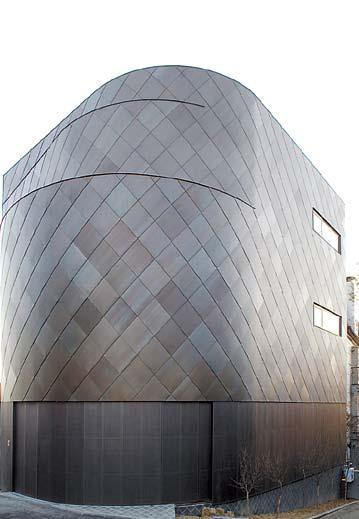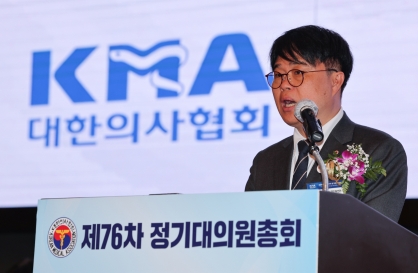Following is the third in a series of articles in which leading architects discuss their representative work. ― Ed.
Architecture is a projection of rationalized fantasies onto the world. It consists of spaces that started as programs, budgets and rules; they became characters, animals, labyrinths and more.
In 2006 we designed our first project in Seoul; a house we called Godzilla, for its sleepy-dragon appearance, but also for the hard time our first Korean construction experience gave us.
Architecture is a projection of rationalized fantasies onto the world. It consists of spaces that started as programs, budgets and rules; they became characters, animals, labyrinths and more.
In 2006 we designed our first project in Seoul; a house we called Godzilla, for its sleepy-dragon appearance, but also for the hard time our first Korean construction experience gave us.


The project started with reasonable elements; a list of functions, regulatory constraints and orientation. Then the project turned into an unconventional space; the facades became one wide curve, an interior promenade spiraled through all floors, creating new relationships between the spaces, surprises with unexpected large dimensions.
The faade is dark and closed like the back of a dragon, yet the interior spaces are flooded with light. That is the work of architecture as we defined it for ourselves ― creating music that unfolds through the entire house. People living there know it; the house has a mood that makes their living space unique.
An architect’s life is one of pleasure and pain. Sometimes we get the chance to meet great people in beautiful places.
Chang Ucchin, a Korean painter who passed away in 1991, will have his own museum in a beautiful valley in Yangju. From the start, we defined the museum to reflect the painter’s spirit, as expressed through his work. His small paintings sometimes show a family in a house space, simplified to the extreme and yet tense with energy.
Other recurrent figures, such as a tiger’s body floating in a blurred landscape and single trees, gave us the elements from which to conceive Chang Ucchin’s own house-museum. We imagined extremely simple spaces that would weld together to create a body that can be explored, creating different orientations and proportions, wide landscape views as well as points where the occupants unexpectedly come face-to-face with the mountain.
The museum is not meant to be a monument, nor a neutral recipient for revered art, but instead a place that channels an intense relationship between the painter’s work and today’s public.
In our everyday lives, everything around us is a design. All objects we use, spaces we live in, landscapes we see, almost all of them have been shaped in design offices.
Architects participate only in a small part of this huge production, but we have a special role; we create spaces with cultural value. Architecture is needed, so that our living environment doesn’t become the result of optimized profitability pushing against the limit of regulations.
As citizens, we look at our urban spaces dominated by faceless developments and mass-produced space. So we had to define what the essence of our activity is: We handle form and perception, construction techniques and regulations into one discipline; we are artists of space who create places that have a presence. This is the way we make architecture, our way of participating in contemporary culture.

By Songhee Chae, Laurent Pereira
■ CHAE-PEREIRA Architects is a Korean-Belgian partnership.
Their practice proceeds by instilling their spatial fantasies on Korean reality. After their selection for the Nodeul Island Opera international competition, their small scale but distinctive projects have been honored by several architectural prizes, and selected for the exposition “Convergent Flux, Korea” at Harvard University. They have been nominated as a public architect by Seoul City government.
-
Articles by Korea Herald





![[Weekender] How DDP emerged as an icon of Seoul](http://res.heraldm.com/phpwas/restmb_idxmake.php?idx=644&simg=/content/image/2024/04/25/20240425050915_0.jpg&u=)




![[Music in drama] An ode to childhood trauma](http://res.heraldm.com/phpwas/restmb_idxmake.php?idx=644&simg=/content/image/2024/04/25/20240425050929_0.jpg&u=)








![[Herald Interview] Mistakes turn into blessings in street performance, director says](http://res.heraldm.com/phpwas/restmb_idxmake.php?idx=652&simg=/content/image/2024/04/28/20240428050150_0.jpg&u=20240428174656)
